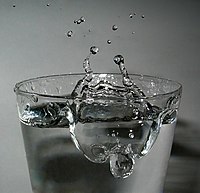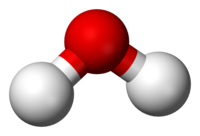
Back Chemiese verbinding Afrikaans Chemische Verbindung ALS Compuesto quimico AN यौगिक ANP مركب كيميائي Arabic مركب كيماوي ARY مركب كيماوى ARZ ৰাসায়নিক যৌগ Assamese Compuestu químicu AST Kimyəvi birləşmə Azerbaijani
A chemical compound is a chemical substance composed of many identical molecules (or molecular entities) containing atoms from more than one chemical element held together by chemical bonds. A molecule consisting of atoms of only one element is therefore not a compound. A compound can be transformed into a different substance by a chemical reaction, which may involve interactions with other substances. In this process, bonds between atoms may be broken or new bonds formed or both.
There are four major types of compounds, distinguished by how the constituent atoms are bonded together. Molecular compounds are held together by covalent bonds; ionic compounds are held together by ionic bonds; intermetallic compounds are held together by metallic bonds; coordination complexes are held together by coordinate covalent bonds. Non-stoichiometric compounds form a disputed marginal case.
A chemical formula specifies the number of atoms of each element in a compound molecule, using the standard chemical symbols with numerical subscripts. Many chemical compounds have a unique CAS number identifier assigned by the Chemical Abstracts Service. Globally, more than 350,000 chemical compounds (including mixtures of chemicals) have been registered for production and use.[1]
- ^ Wang, Zhanyun; Walker, Glen W.; Muir, Derek C. G.; Nagatani-Yoshida, Kakuko (2020-01-22). "Toward a Global Understanding of Chemical Pollution: A First Comprehensive Analysis of National and Regional Chemical Inventories". Environmental Science & Technology. 54 (5): 2575–2584. Bibcode:2020EnST...54.2575W. doi:10.1021/acs.est.9b06379. hdl:20.500.11850/405322. PMID 31968937.

